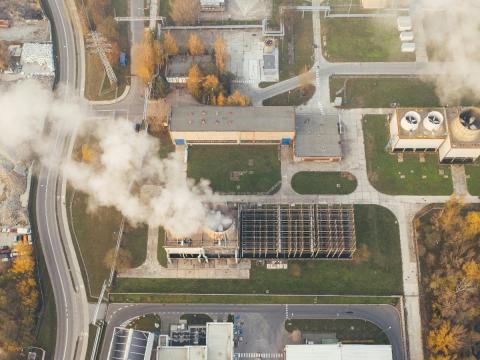
SurfAtm, a Model for Assessing Exchanges of Pollutants Between the Atmosphere and the Biosphere, Goes Open Access
March 13 2024The SurfAtm model (a contraction of the words Surface and Atmosphere), has just been made available in an open-access format. Erwan Personne, an AgroParisTech faculty member with the EcoSys Joint Research Unit* (INRAE – AgroParisTech) and the researcher who helped create this model in collaboration with Patrick Stella, Associate Professor at AgroParisTech, tells us more about SurfAtm, its specificities, and the different ways it can be used.
* Functional Ecology and Ecotoxicology of Agroecosystems
An easy-to-use tool to assess pollutant exchanges
The SurfAtm model was developed in response to the need to evaluate the exchange of pollutants between ground-level ecosystems (initially for use on agricultural plots, but applicable to all natural ecosystems) and the atmosphere. In practical terms, this mathematical model uses climate data and surface descriptions (types of plants, soil, etc.) to model the quantity of energy and pollutants exchanged in a given area. The pollutants currently included in the model include ozone, pesticides, and ammonia (editor’s note: there are plans to include aerosols in the future as well). Ammonia (primarily emitted by crop-growing activities as a result of nitrogen-rich fertilizer use), ozone (known for its harmful properties, including its effects on crop yields), and pesticides (in particular pesticides lost in the atmosphere when sprayed over fields) are gas compounds that have been specifically included in the model, due to their high impact on farming ecosystems.
“This model for exchanges of pollutants can calculate, for instance, how many grams of pesticides have been dispersed in the air, or how many pounds of nitrogen are lost in the air when a field is fertilized—thus making it ‘inefficient’ in terms of farming.And the model is intended to be generic: if the specificities of a given pollutant are known—particularity in terms of how it interacts (biologically and chemically) with surfaces—our model can be adapted to include it.This means we can calculate how much of a pollutant will be released or deposited over the course of an hour, a week, a year, or even a decade,” said Erwan Personne.
The Specificities of the SurfAtm Model
The model stands out in two respects: scientifically, and in terms of the approach used.
From a scientific perspective, there are two important specificities. First, SurfAtm is a “multi-pollutant” model, which offers users the ability to model several pollutants at the same time, and it is even possible—provided that the model is configured to do so—to model a pollutant that isn’t initially part of the default parameters. Second, it offers the possibility to know what temperature specific surfaces are at (plant surfaces, soil surfaces, etc.), which is an important parameter when attempting to properly describe a microclimate: “The ability to study interactions between energy and pollutants is part of what sets the SurfAtm model apart.”
In terms of the approach used, Erwan Personne also points to the transparency of the process: “We oversaw the whole process all the way up to public release.The process of designing and configuring the model leveraged the work of doctoral dissertations (computer science and digital development, experimental confirmation, etc.), with additional scientific publications produced on the basis of that research.In addition to scientific dissemination, every stage of the model’s dissemination was carefully thought out: the model was registered as an invention, its name (SurfAtm) was registered for protection, and the code was licensed under an open-source license with a versioning and review process.” Broader dissemination was then ensured through a peer-reviewed journal (Elsevier) and the code-compilation-simulation packages were released via an open-access platform (Codeocean).

SurfAtm is also being combined with urban exchange models to quantify the effects of urban vegetation on urban air quality (and particularly on the presence of specifically targeted pollutants: ozone and fine particles).
Who is the SurfAtm Model Intended For?
To conclude, Erwan Personne added that, “Our model is simple enough to be used both in a classroom setting (as part of practical seminars, for example) and for research purposes (in lab work).But our aim is also for it to be used by engineering consultancy firms or Chambers of Agriculture.There are therefore three possible target user groups: students for practical work, researchers for research activities (incidentally, it is already in use in our labs at the EcoSys Joint Research Unit), and the staff at engineering consultancy firms, AIRPARIF, etc. Our model has already made its way into society at large.”
This model has also generated interest abroad, with American and Chinese universities having already approached Erwan Personne regarding the model.

